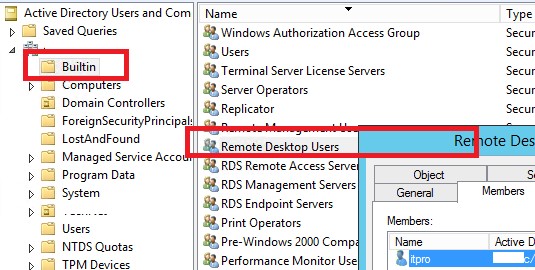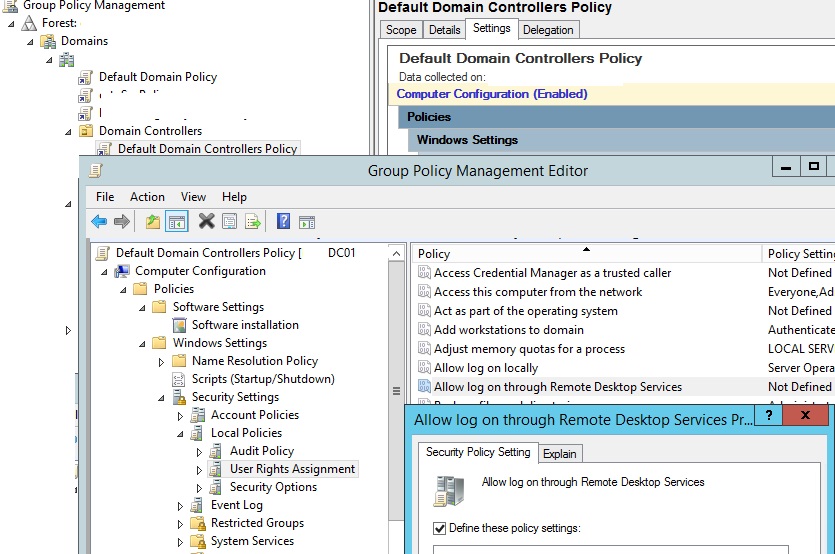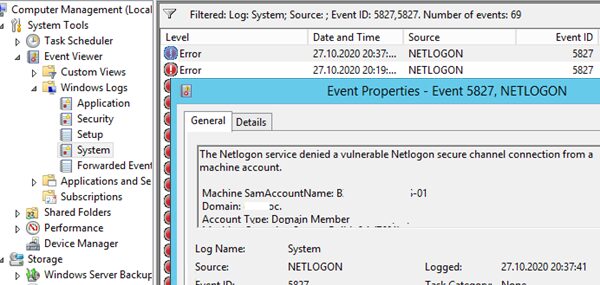By default, only members of the Domain Admins group have the remote RDP access to the Active Directory domain controllers‘ desktop. In this post we’ll show how you to grant RDP access to domain controllers for non-admin user accounts without granting administrative privileges.
Many of you can quite reasonably ask: why would ordinary domain users have access to the DC desktop? Indeed, in small or middle size infrastructures, when several administrators with the privileges of domain admins maintain them, you’ll hardly need this. In most cases, delegating some administrative permissions in Active Directory or using PowerShell Just Enough Administration is sufficient.
However, in large corporate networks maintained by many administrators, it may become necessary to grant RDP access to the DC (usually to branch office DC’s or RODC) for different server admin groups, monitoring team, on-duty administrators, or other technical staff. Also, from time to time some of the third-party services, not managed by the domain administrators, are deployed on the DC, and there’s a need to maintain these services.
To Sign in Remotely, You Need the Rights to Sign in through Remote Desktop Services
After the server has been promoted to the domain controller, you cannot manage local users and groups from the Computer Management mmc snap-in. When you try to open Local Users and Groups (lusrmgr.msc) console, the following error appears:
The computer xxx is a domain controller. This snip-in cannot be used on a domain controller. Domain accounts are managed with the Active Directory Users and Computers snap-in.
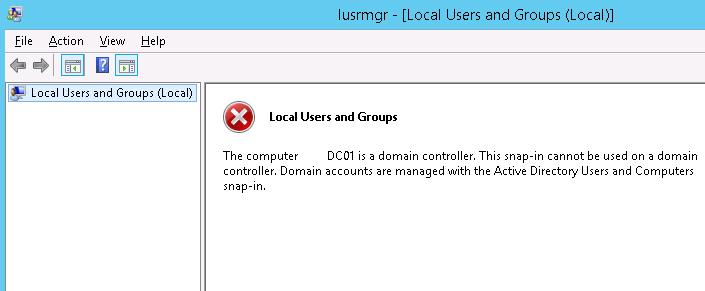
As you can see, there are no local groups on the domain controller. Instead of the local group Remote Desktop Users, the DC uses the built-in domain group Remote Desktop Users (located in the Builtin container). You can manage this group from the ADUC console or from the command prompt on the DC.
Display the members of the domain group Remote Desktop Users on the domain controller using the command:
net localgroup "Remote Desktop Users"
As you can see, it is empty. Add a domain user it-pro to it (in our example, it-pro is a regular domain user without administrative privileges):
net localgroup "Remote Desktop Users" /add contoso\it-pro
Make sure that the user is added to this group:
net localgroup "Remote Desktop Users"
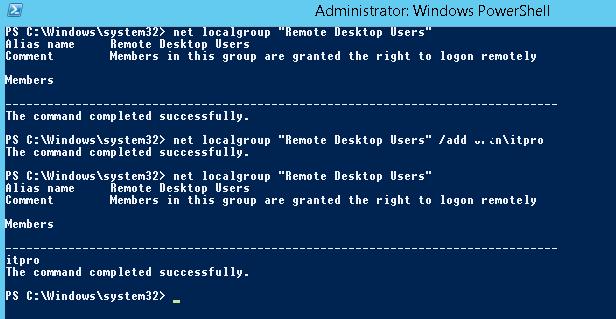
You can also verify that the user is now a member of the Remote Desktop Users domain group using the ADUC (dsa.msc) snap-in.
However, even after that, a user still cannot connect to the DC via Remote Desktop with the error: To sign in remotely, you need the right to sign in through Remote Desktop Services. By default members of the Administrators group have this right. If the group you’re in does not have the right, or if the right has been removed from the Administrators group, you need to be granted the right manually.
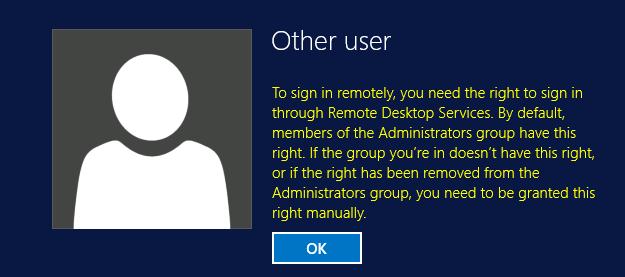
Group Policy: Allow Log on through Remote Desktop Services
To allow a domain user or group a remote RDP connection to Windows, you must grant the SeRemoteInteractiveLogonRight privileges. By default, only members of the Administrators group have this right. You can grant this permission using the Allow log on through Remote Desktop Services policy. In Windows 2003 and older this policy is called Allow log on through terminal services.
To allow remote connection to the domain controllers for members of the Remote Desktop Users group you need to change the settings of this policy on your domain controller:
- Launch the Local Group Policy Editor (
gpedit.msc); - Go to the GPO section Computer Configuration -> Windows settings -> Security Settings -> Local policies -> User Rights Assignment;
- Find the policy Allow log on through Remote Desktop Services; After the server is promoted to the DC, only the Administrators group (these are Domain Admins) remains in this local policy.
- Edit the policy, add the domain group Remote Desktop Users (like this:
domainname\Remote Desktop Users), or directly the domain user, or a group (domain\CA_Server_Admins) to it; - Update the Local Group Policy settings on the DC using the command:
gpupdate /force
Note that the group that you added to the Allow log on through Remote Desktop Services policy should not be present in the “Deny log on through Remote Desktop Services” policy , because it has a higher priority. In addition, if you are restricting the list of computers on which users can log on, you need to add the DC name to the properties of the AD account (LogonWorkstations user attribute). To allow a user to log on to the DC locally (via the server console), you must add the account or group to the policy “Allow log on locally”. By default, this permission is allowed for the following domain groups:
- Backup Operators
- Administrators
- Print Operators
- Server Operators
- Account Operators
It is better to create a new security group in the domain, for example, AllowLogonDC and add user accounts to it that needs remote access to the DC. If you want to allow access to all AD domain controllers at once, instead of editing of the Local Policy on each DC, it’s better to add a the user group to the Default Domain Controllers Policy using the GPMC.msc console (change the policy settings in the same section: Computer Configuration\Windows Settings\Security Settings\Local Policies\User Rights Assignment -> Allow log on through Remote Desktop Services).
Warning – If you change the Default Domain Controllers Policy, don’t forget to add the domain/enterprise administrator groups to the policy Allow log on through Remote Desktop Services, otherwise they will lose remote access to the DCs.
Now the users (groups) you added to the policy will be able to connect to the AD domain controllers via RDP. If you need to grant non-administrator users the permissions to start/stop certain services on a DC, use the following guide.
The Requested RDP Session Access is Denied
In some cases, when connecting via RDP to a domain controller, an error may appear:
The requested session access is denied.
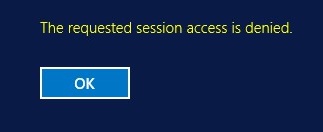
If you are connecting to the DC under a non-admin user account, this could be due to two problems:
- You are trying to connect to the server console (using the
mstsc /adminmode). This connection mode is only allowed for administrators. Try to connect to the server using mstsc.exe client in normal RDP mode (without/adminoption); - The server may already have two active RDP sessions (by default, you can’t use more than two simultaneously RDP sessions on Windows Server without RDS role). You cannot log off other users without administrator permissions. You need to wait for the administrators to release one of the sessions.

